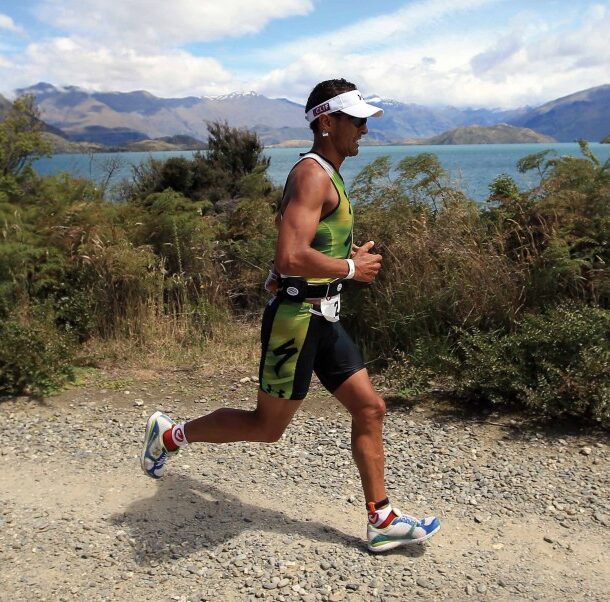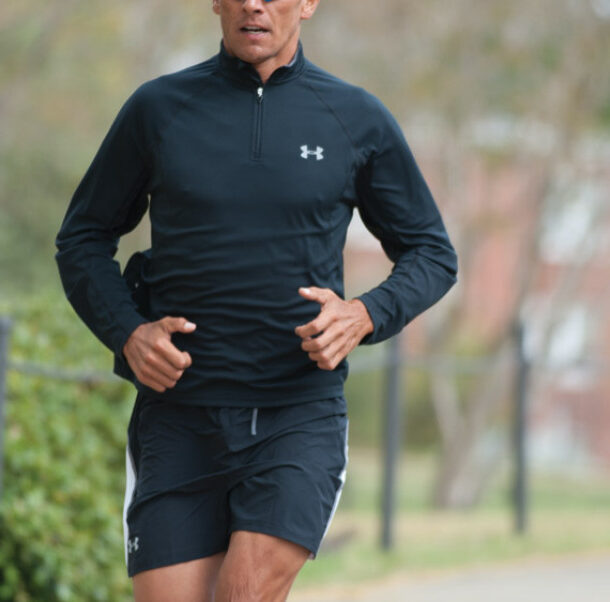
Chris McCormack says relying on our high-tech tools can be a bad thing — so leave them at home once in a while.
(Originally published in Triathlete Magazine December 2013.)
I recently spent the week with 2012 Ironman world champion Pete Jacobs in the Philippines, where we were both racing the Ironman 70.3, one of the best events on the global race calendar. It is always refreshing to spend time with Pete, as he such a positive, unrestricted athlete, and his views on many triathlon-related things are so similar to my own. The thing I most enjoy about Pete is his innate ability to find a positive in every situation. He is also an athlete who is very centered and has developed an amazing training system built around recovery and body mechanics more than physicality and structured power sets.
We touched on the topic of training versus racing. Pete had just done a training block with a group of athletes who were taken aback by his relaxed program. As he put it, “Many athletes are so obsessed with the structure and the number, whether it be power, miles completed or training cycles, that they forget the entire purpose of training is to be your best on race day.” I enjoyed our discussion, and it really solidified my shared belief that many triathletes can get so caught up in the training process that they neglect a big-picture focus on the outcome.
It’s getting the three sports as balanced and as close to the athlete’s best that is the key to success. I have never been able to understand why people get so obsessed with who was first off the bike or who posted the best times in each of the single disciplines. The winner crosses the line first, and improvement means reducing your overall finish time. This takes an approach that needs to be balanced and looks at your entire spectrum of performance within the sport over the three disciplines.
When I begin training for any distance, what I am looking for is an ability to feel my way through the speed I am targeting. I rarely use a heart rate monitor or a power meter. I understand the science behind these tools, but they are just that — tools. I have always found that the key to incremental improvement is learning to trust your own pace and exertion. It was great to hear Pete reaffirm that this “perceived exertion” model plays a huge part in his training structure.
If you ask me to go hard, I know what hard feels like. Do I need to give you an exact number to justify that it was hard? No, I don’t. I can tell you by how it feels. People who become addicted to gadgets lose their ability to trust their own pace and only trust what their training “tool” tells them. As far as I am concerned, this is a recipe for disaster. Training is about teaching yourself to understand your boundaries and then slowly pushing those boundaries. You need to know how those benchmarks feel and understand where they are! You can develop confidence and freedom through this style of training.
I am not dismissing the purpose of training tools, but they should be left at home sometimes so you can learn to trust your efforts. Coaches like these tools because they can go through the data and make suggestions for improvement, but these gadgets can also be detrimental if you learn to rely on them too much. Go out and try to get in touch with your perceived exertion at least a few times a week.
Often when I go to a new town, I test myself by doing the following: I check the clock before I leave the hotel room and I plan on going for a one-hour run. When I come back, I see how close to that hour I actually was. I don’t take a watch or set a pace. I try to feel my way to understanding just how long I have been running by my surroundings and my pace and effort. The fitter I get, the better I am at getting very close to the hour. Early in the season I have gone for what I thought was an hour run and it wound up only being 45 minutes. It’s crazy how skewed your perceived effort and time can be without the use of tools sometimes. Now I feel very confident that I can nail a 10-mile run without relying on a Garmin to tell me distance, and I could run 90 minutes pretty close to the minute without a watch. It is something I enjoy doing weekly, and the more you test yourself, the better you will start to feel about how in tune you are with your body. It is this understanding that could be your biggest strength in a race.
If you have a Garmin or other tracking tool, I would also recommend doing a session where you turn off all notifications and run six miles at a perceived pace without looking at anything. When you feel like you have hit the distance, stop and see how close you came to the pace and mileage.
I enjoyed a “freedom” run with Pete two days prior to our 70.3 race. It was awesome to know that he follows a very similar process in his race preparation. We all get into triathlon for many reasons, and often our drive to improve can complicate things. As we begin to think that we are getting more scientific and focused on our training by adopting many of these tools into our training programs, we often perceive this free training principle as “not being focused enough.” In many cases you could not be further from the truth. Knowing who you are athletically and enjoying what you do can lead to more success in the long run. I know I took this style of training to some great success, and Pete continues to prove that freedom in your training sessions and not always being a slave to the gadgets can be your best training asset. Give it a try.
Philosophy
“Great things happen to people who make great things happen.”
Navigate
[email protected]
Terms & Conditions
Privacy Policy

